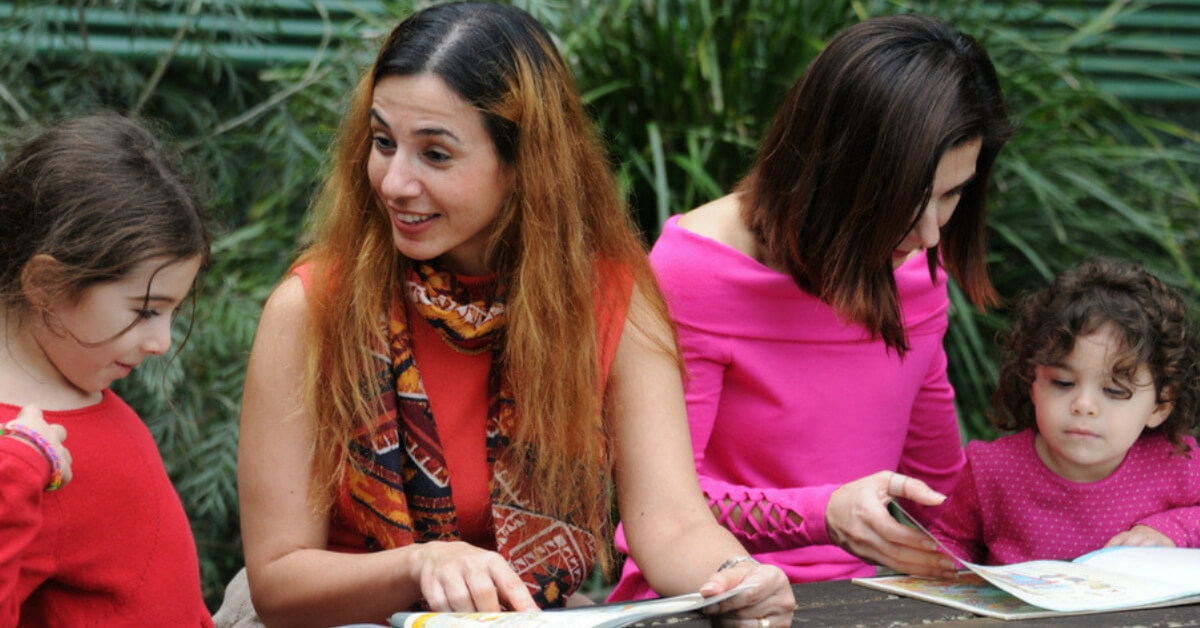By: Anne Rinaudo
New research from Australian Catholic University finds that HOW you read to kids is very important. Learning Sciences and Teacher Education researcher Dr Ameneh Shahaeian has six tips for parents. Ameneh read a story to Stephen O’Doherty to demonstrate the how best to read a story.
The six top ‘how to read to your child’ tips
Tip 1: Tune in to your child. Perhaps the most important aspect of reading to children is to tune in to your child. Listen to your child’s cues. Do they like the story or not? Do they know the vocabulary or not? Are they paying attention to the pictures more, or the written text? Try to coach your child, not to instruct them.
Tip 2: Ask questions. Parents who ask lots of questions from their children create a more enjoyable, fun and informative environment. Ask if they can guess what the story characters are going to do next, and why they have behaved in certain ways. These questions also help to strengthen the emotional bonds between parents and children. Children like to feel that they are a part of the task, not that they are being told how to do things.
Tip 3: Go beyond describing the images or reading the text. In the study, parents were given a wordless picture book to read. An important difference that was observed between parents was that some parents only ‘describe’ what they see in the pictures, while some go beyond the picture to create other possible scenarios. The research found that imagining what is beyond the pictures and words to be a richer way to tell the story to children. Ultimately this leads to better cognitive developmental outcomes for children.
Tip 4: Make logical links between different parts of the story. An element that has a strong link to children’s developing cognitive skills is the way that parents build logical links between different parts of the story. Often the events in books unfold very quickly. One minute, the wolf eats the little goats, and the next minute he is found by the mother. Some parents try to make the sequence of events more logical than others. For example, when the wolf is coming to knock on the door, one parent that was studied by the research said, ‘The wolf, who was sunbathing in the bush, saw that the mother is going to get some food. He thought, oh, the little goats are alone at home, and it’s a good time for me to go and trick them and maybe get a good lunch.’ The parent is clearly providing logical links between the different parts of the story.
Tip 5: Add relevant details. The research also found that most parents add many details to the story to make it more interesting or comprehensive. However, what are described as ‘relevant details’ were the most useful in terms of improving children’s learning. Relevant details were the kind of details that were added to the story to make it more understandable. For example, one parent said: ‘The smallest goat, who was also the cleverest and very careful, said….’ This parent is clearly adding a detail (that the smaller goat is also most clever and careful) which makes the story more meaningful and easier to understand.
Tip 6: Talk about mental and emotional concepts. Finally the research found that parents who not only describe the events of a story but also discuss abstract concepts related to emotions, desires and thoughts tend to have children who are more cognitively-skilled. These children develop a better understanding of others’ emotions, better friendship skills, and even improved memory and higher-order cognitive skills which are useful in later life and can lead to success, including academic success.
The ‘how to read’ advice follows Dr Shahaeian’s recently published research which found the more frequently parents read to their children, the higher the children’s NAPLAN scores. She spoke to Open House about that research too.
Listen: Dr Ameneh Shahaeian reads “The Wolf and the Seven Goats” to Stephen O’Doherty.
Article supplied with thanks to Open House.
About the Author: Anne is the producer of Open House – a weekly three-hour live talkback radio show exploring life, faith and hope from a Christian perspective.

